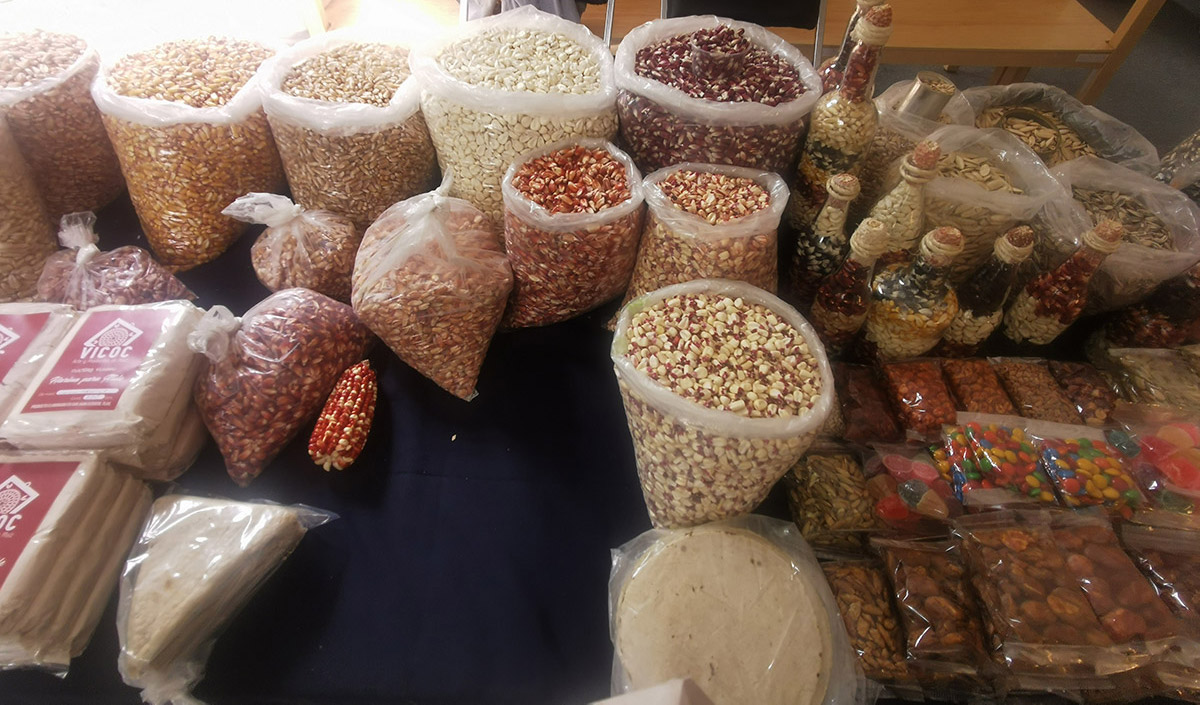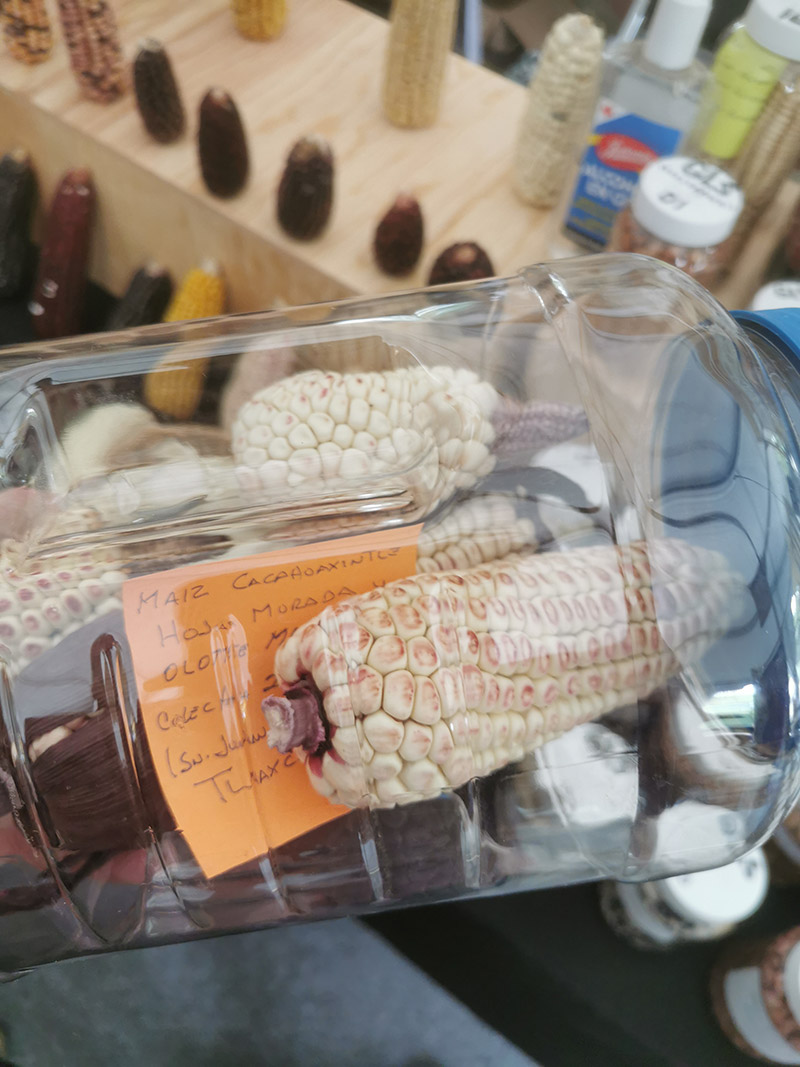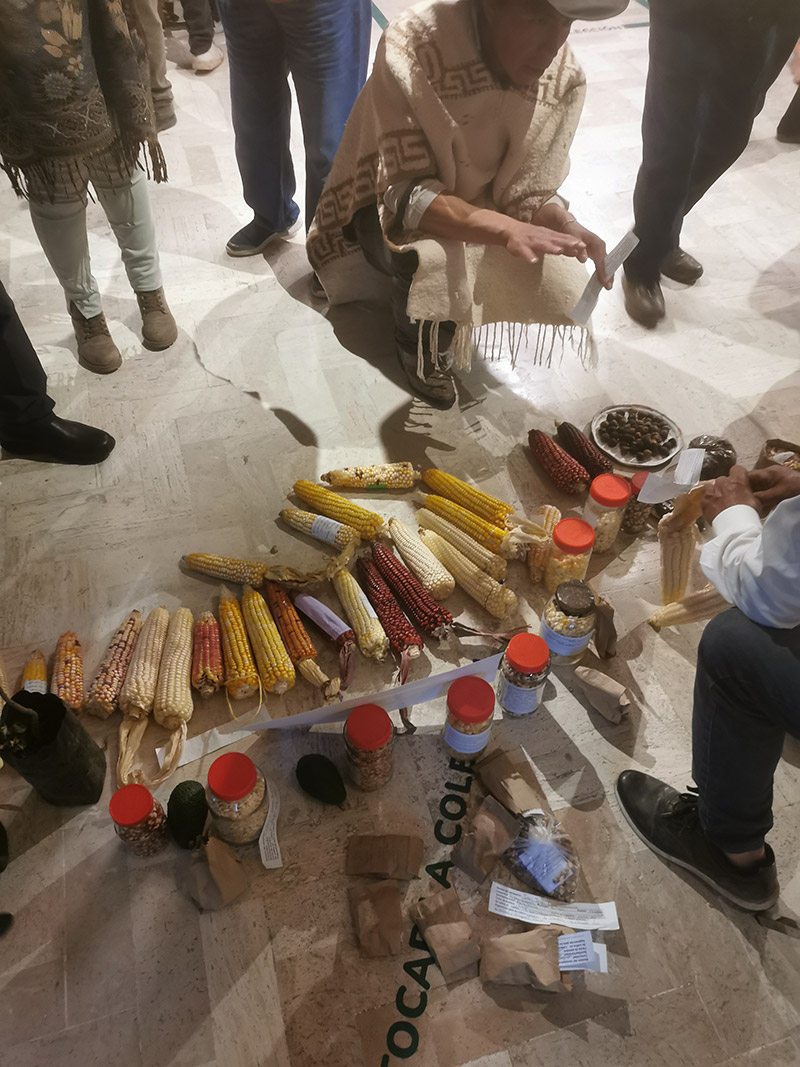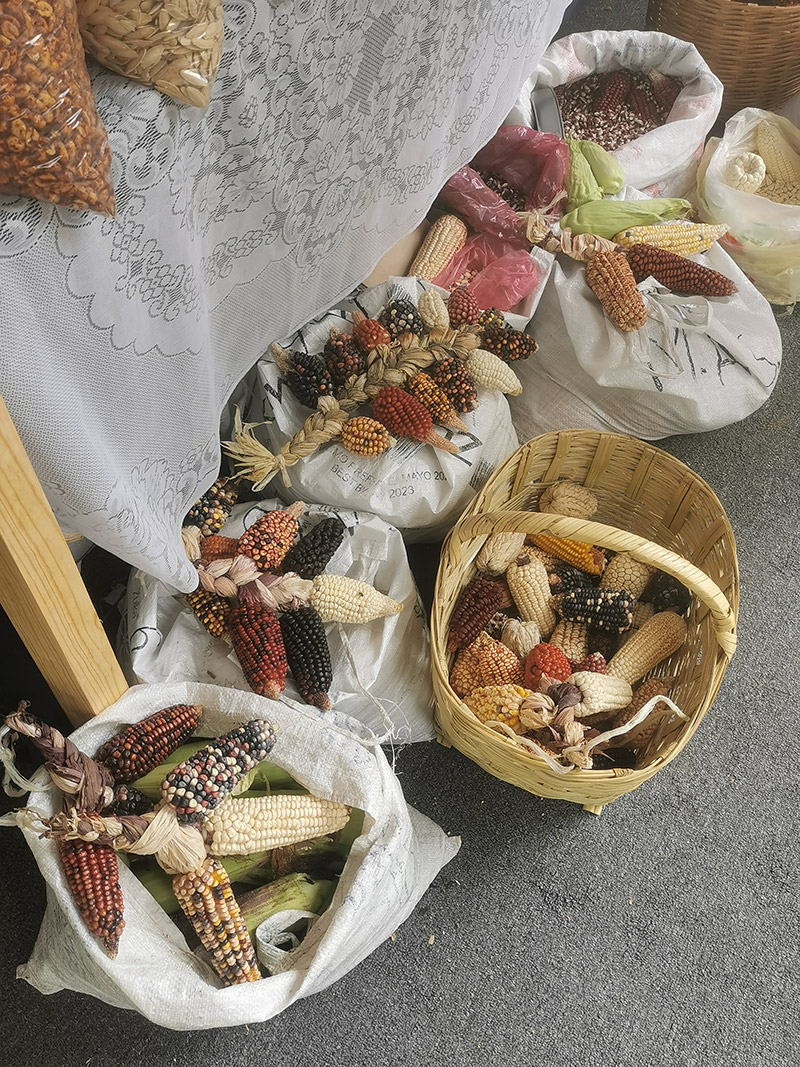Ethnographic vignette about maize-human relatedness in the Oaxaca Lowlands
Due to the ongoing closure of Mexico City’s metro-line-one, I was running late to attend day two of the Feria Nacional de Intercambio de Semillas (The National Seed Exchange Fair). The event, which brought together producers from thirteen of Mexico’s thirty-one states, was the first of its kind and had been organised by a national NGO that acted as an umbrella organisation for smaller collectives aimed at promoting the cultivation and use of native corn. I arrived at the event just as a participant from the southern state of Chiapas began leading the attendees in what he described as a Mayan ceremony in which we would ask forgiveness from the earth for disrupting it (as a participant had cleared the grass a ten by twenty metre patch, and tilled in in preparation for seed sewing). We were also to ask for permission to sew, and that the earth would grant us a bountiful harvest. The ceremony, in which we paid our respects to the four cardinal directions as well as downward to the earth and upward to the sky, was remarkably similar to the Zapotec-inspired rituals of Oaxaca’s central valleys’ region that I had attended prior to native corn sewing and other events in which the importance of native corn preservation was being promoted. As occurred in Oaxaca, many of the participants incorporated Catholic prayer into their performance of the ceremony.

Following this, Vincente, a campesino from Tlaxcala who had taken charge in organising events throughout the Intercambio, asked attendees to turn their attention to the plot that was to be sewn with native corn seeds, as well as beans and pumpkin varieties – the three plants most associated with Mesoamerica’s famed Milpa system of intercropping. From the crowd of roughly 80 attendees, he asked for one representative from each state, everyone to be accompanied by a visitor who was not involved in agriculture, to come forward and form a line along the short end of the lot. After a few minutes of confusion, the first farmer introduced herself, explained how corn is cultivated in her region of Chiapas. One after another, the state representatives stepped forward, introduced themselves and the corn they were sewing (invariably naming it for the colour of the grain it would produce). They offered the local name of the system they used for sewing (estaca, coa, yunta etc.) and demonstrated with the help of the visitor how such sewing occurs. This did not run smoothly, however. One pair of planters, not understanding their task, began to sew before their turn, and Vincente directed them to stop and start over when the audience was ready to listen to them. Another farmer from the northern state of Sonora, a state associated with intensive agriculture, expressed his frustration at the activity. “There we plant with tractors,” he said, before noting that without his machine he would just be doing the same thing every representative had already demonstrated.
In critiquing the relative similarity of practice, the Sonoran was questioning a major theme of the event, namely the commonality of experience and practice that exists across rural communities; simultaneously however, the feria intended to highlight Mexico’s diversity too. Opening the feria the day before the sewing took place, a government worker representing the ministry of culture used her speech to thank corn farmers. She noted the number of corn-based dishes across Mexico (the often touted figure being around 700) and described them as “guardians of our cultural memory”. The work of farmers, she continued, is “what makes us the nation that we are, que florezca el maíz y que florezca México” (Let maize bloom and let Mexico bloom too). This was followed by speeches, again with one representative from each state asked to talk. These speeches often referenced the “rescate” (rescue) or “recuperación” (recovery) of native corn varieties. The event organiser invited speakers to talk “in their own languages”, and many took her up on this offer, speaking briefly in a number of languages from across Mexico.
The celebration of Indigenous identities continued throughout the day. A dance troupe from Mexico City put on a performance which was intended to demonstrate the dancers’ “raíces ancestrales” (ancestral roots). Largely comprised of people in their late teens and early twenties, all dancers were dressed in loose white garments, with red cloth tied around waists and heads. Two members of the group carried flags with Mexica hieroglyphs. In between dances the troupe’s leaders, a man and a woman in their forties, would speak to the audience, often sharing a few words in Nahuatl.
After a long delay, organisers informed the attendees that the main event of the feria, the seed exchange, was about to start. Producers and stragglers still at the event gathered in a hall, and those who had brought seeds to swap arranged them, taking care to create visually appealing displays of colourful corn. The ministry of culture worker returned and asked to speak before the exchange would take place. She stated that she wanted to thank the farmers for their “trabajo, el amor, por lo que nos ofrecen, y que cuidan” (the work, the love, for what you offer us and what you care for), she added “It’s not only that I want to thank you, but the whole country has to thank you”. The audience applauded and shortly after began to exchange seeds.
The exchange was structured so that one producer from every state would exchange seeds with producers from at least two other states. A farmer was asked to step forward, describe the qualities of the corn they had brought, and choose another farmer from a different state with whom they would like to exchange seeds. The elected farmer, after receiving seeds from the first producer and offering their own seeds in return, was instructed to again discuss the qualities of their region’s corn and then choose a producer from a different state with whom they would exchange. This continued until one producer from every state had been called upon. After this the structured part of the exchange came to an end, and all producers were allowed to freely swap seeds among themselves. In doing so they exchanged growing tips with producers from across the country, discussed geographic and cultural differences that existed among them, and admired the variety of colours and sizes of corn available to choose from.
 Cacahuazintle maize, held in a plastic container for display, brought to the fería by producers from Tlaxcala
Cacahuazintle maize, held in a plastic container for display, brought to the fería by producers from Tlaxcala



View profil — Owen McNamara
